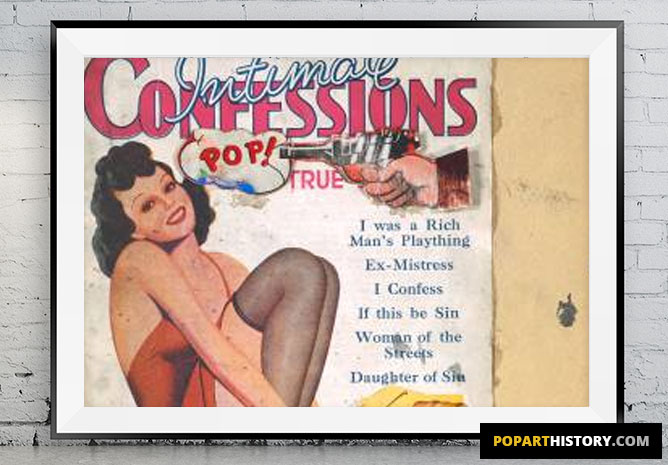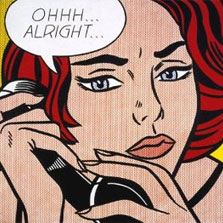| Pop Art History > Origins | ||||
|
Origins of Pop ArtSmall glimmers of what would eventually result in the pop art movement can be found in the works of artists such as Gerald Murphy and Charles Demuth in the 1920's, who created works that incorporated many aspects of the contemporary commercial artwork.
The art world of the time, however, was going through a period of avant-garde cubism and true pop art would not emerge in its modern form until the early 1950's in Europe. Ironically, though this art would be European in origin, it was heavily influenced by the mass media in the United States, which permeated every aspect of American culture. �The pop art movement in its moderns sense started with British artists in London, who began to produce collages and paintings that were inspired by the various aspects of commercial media, especially American comic books, movies, television, and celebrity culture. Much of this art arose from the collaboration of a handful of artists that came together to for The Independent Group, and they would go on to organize some of the first and most important exhibitions to display pop art to a wider audience. Some of these artists include Eduardo Paolozzi and Richard Hamilton, whose works would eventually be regarded as classic foundational examples of pop art, and would heavily influence the work of American artists such as Andy Warhol. �One of the most important of these early exhibitions took place after the Independent Group closed their official meetings, an exhibition called This is Tomorrow. It is here where what is widely considered to be one of the first true examples of pop art was first displayed: Just what is it that makes today's homes so different, so appealing? by Richard Hamilton. Though Paolozzi and others produced pop art collages that predated this, Hamilton's work was one of the first works of art to include all of the elements of modern pop art and to be displayed in a major exhibition. �Eventually, pop art would spread from Britain and enter the American realm, from where the art originally drew its cultural inspiration. �In the U.S., formally commercial artists such as Andy Warhol became part of the movement and began displaying their parodies of advertisement and other elements of mass media in fine art exhibitions. Andy Warhol founded his studio The Factory in New York during the early 1960's and would go on to become a hugely influential artist, producing many famous examples of pop art that are still regarded as highly significant to this day. His studio would attract many different artists of many different media, and together they would collaborate and produce a myriad of pop art pieces, including paintings, collages, films, music, and books. Another prominent American artist who was an associate of Warhol and produced classic examples of comic-book-based pop art was Roy Lichtenstein, and many of his works are looked upon as being foundational�even stereotypical�works of pop art. �Though pop art had its start in the 50's in 60's, it continues to be relevant today in many different forms, and its influence has yet to die out. �

|
|||||||||
| Pop Art History | What is Pop Art? | | American Pop Art | British Pop Art | Independent Group | Artworks Top 10 Famous Artworks | Roy Lichtenstein | Richard Hamilton | Andy Warhol | Timeline | Dictionary | FAQ | Citations | References | Websites Pop Art History - All artworks copyright belong to the artist - Reproduction is strictly prohibited |

